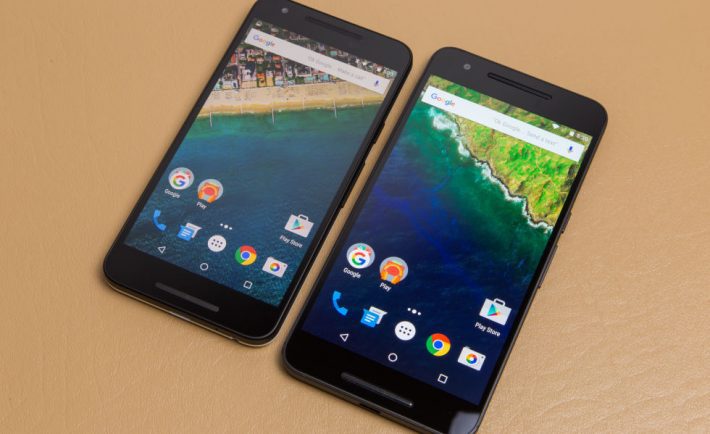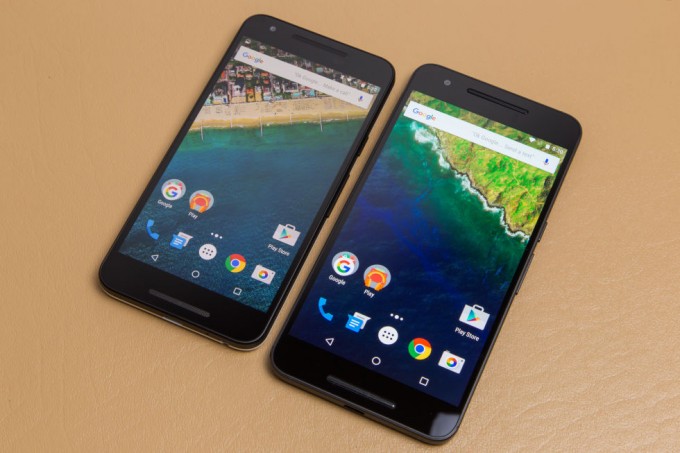
Tech giants Google and Apple have been battling hard for their shares of the consumer electronics marketplace. Apple revealed updates to its product lineup at a much-publicized event in early September, only to be matched by rival Google towards the end of the month. Since the two firms compete for many of the same customers, it’s interesting to note the different approaches taken by these corporate behemoths.
Apple Lands First

Everything Apple announced at its September 2015 event
Apple’s event took place September 9th in San Francisco and featured CEO Tim Cook demonstrating new products and capabilities. Every year in recent history, the company has held a similar event to highlight the new innovations coming out of Cupertino. By waiting until after Apple played the role of opening act, Google was able to swoop in on September 29, also in San Francisco, and pitch to an audience that was already primed to receive info on the newest gadgets around. Indeed the presenters for Google made a couple of subtle jabs at Apple while showing off their products.
The different mindsets of the two enterprises were clearly on display at their respective gatherings. Apple has become the largest company in the United States by market capitalization, and this makes it difficult for the firm to try out new things despite former CEO Steve Jobs’ famous dictum to “think different.” Most of its announcements were regarding marginal improvements to its existing product lineup rather than new ways of shaking things up. Apple’s philosophy is about superbly designed, proprietary hardware coupled with easy-to-use software that even users lacking in technical savvy can appreciate.
Android Attacks The Premium Market

Nexus 5X and Nexus 6P review: The true flagships of the Android ecosystem
Google, on the other hand, is in a better position to be irreverent and innovative. Google will work with anyone and anything that’s prominent in the marketplace, which is in line with its philosophy in favor of open architectures, cheap hardware, and accessible programming interfaces. The Google staff members who took to the floor even mentioned Apple’s products without hesitation or discomfort. They also seemed hipper, more laid-back, and funnier than Apple’s somewhat-straightlaced execs. The drawbacks to Google’s design vision include lower margins and interfaces that many consider more difficult for end-users to navigate.
Google – September Press Event 2015
Apple announced a new version of Apple TV for $149 that will contain an app store and have features designed to appeal to gamers along with support for popular streaming media services. There are two new models of iPhone, the 6S at $549 and the 6S Pro for $649 as well as the business-focused tablet iPad Pro that will set buyers back $799.
Google released products to compete with all of these Apple devices. Android TV can be built into televisions by the manufacturers or added on later by users and replicates much of the functionality of the Apple TV. The new Nexus 5X and 6P will go head to head against the two just-released iPhones but will only cost $379 and $499 respectively. Meanwhile, the Pixel C tablet targets the same enterprise users as the iPad Pro, and it seems like both units will offer similar performance. The Pixel C will be $300 cheaper however.
Microsoft Kills It!
Microsoft’s Windows 10 hardware event in 9 minutes
Apple, Google and to a lesser extent Microsoft are all trying to carve up slices of the same consumer device markets. While the feature sets of these devices march ever onward, something is missing from the time when the iPod changed music playback forever or the iMac caught on like wildfire for its creative, streamlined design. The products coming on the market today feel like commodities, not works of art. This is no problem for Google, which can compete on price and features. It’s a challenge for Apple, though, because if its solutions are practically interchangeable with competitors’ offerings, then it’s hard to see why customers will continue to pay Apple’s premium prices.
In the rapidly growing home automation space, Apple is making a push with its HomeKit platform, which will allow devices from different manufacturers, including security systems, lighting controls and smart thermostats, to interoperate through a single interface, such as the Apple TV or Watch. So far, Google has shown no intent to compete strongly in this market, but nobody can tell what the search leader might do in the future.
Apple, with its closed and increasingly risk-averse corporate culture, is coming under heavy fire from Google, which seems to still hold true to its disruptive roots, promotes open architectures and prices its devices in a very cost-competitive way. Yet it only takes one or a couple of groundbreaking products to reassert dominance in the ever-changing tech landscape, and Apple has certainly shown an ability in the past to pull a rabbit out of its hat when necessary. We can’t clearly identify who will come out on top in this titanic struggle, but it’s likely that ordinary consumers will see the capabilities of their electronic accessories increase while prices come down.





One comment
Leave a reply →
Comments are closed.